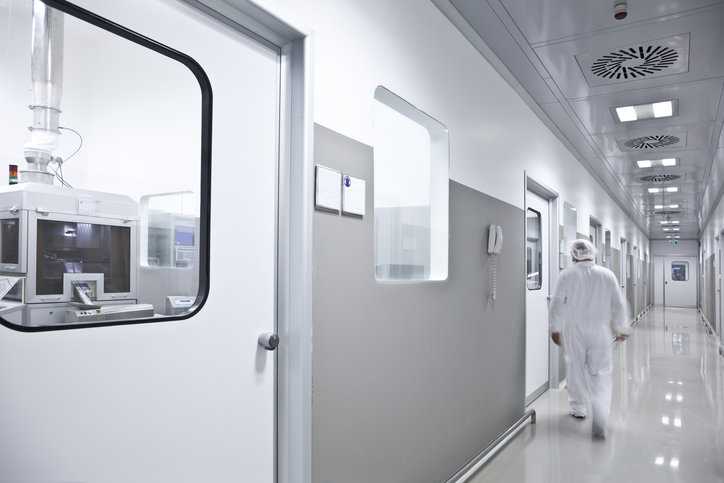Any changes to a fixed scope of accreditation would require the laboratory to contact their accreditation body requesting a scope expansion to add changes to their scope of accreditation. The time requirement of a scope expansion could cost a laboratory the opportunity to meet market demands or meet emergency requirements such as performance of testing related to a food borne illness outbreak. Having some flexibility to the scope of accreditation can greatly assist the laboratory in meeting market demand without undue delay.
What Is a Fixed Scope of Accreditation?
When laboratories are accredited to a standard, e.g., ISO/IEC 17025:2017, the accreditation body issues a Scope of Accreditation that provides definition to the laboratory, stakeholders, and public of the specific capabilities the laboratory is accredited to perform. This is referred to as a Fixed scope of accreditation.
Operating under a fixed scope of accreditation does not allow a laboratory to deviate from the defined scope activities or conduct testing capabilities not previously witnessed and evaluated by their accreditation body.
What Is a Flexible Scope of Accreditation?
A laboratory in good standing with their accreditation body may request a Flexible scope of accreditation. The amount of flexibility allowed may pertain to the full scope or to one or more parameters within the scope. A flexible scope allows a laboratory to make changes in methodology and other parameters which fall within the competence of the laboratory as previously confirmed by their accreditation body and within the boundaries of the scope flexibility. A flexible scope would allow the laboratory to claim accreditation without prior approval from their accreditation body for testing not currently defined within a fixed scope. A flexible scope does not allow a lab to incorporate new methodologies or technologies not previously assessed by the accreditation body and acclaim them as accredited. The laboratory will need to notify their accreditation body of any changes to key personnel involved in activities associated with the scope’s flexibility.
Benefits of a Flexible Scope of Accreditation
Having defined flexibility within the scope can allow a laboratory to make changes to the sample matrix, reporting range, equipment and test kits used, or addition of analytes measured assuming there are no significant changes to the test method process. As an example, a laboratory accredited to perform lead and copper analysis, may be allowed to add nickel, or zinc and report these analytes as accredited tests. Approval of a flexible scope confirms the capabilities of the lab to perform the scope activities and attests to the lab’s ability to manage the activities as defined within the scope flexibility.
Flexibility in the scope may allow the lab:
- Flexibility in the test parameters, components, analytes, and matrices of samples analyzed.
- Materials or products analyzed using accredited methods.
- Versions of accredited standard methods used without modification.
- Versions and performance modifications to accredited non-standard methods.
- Modification of the method range and uncertainty.
- Allowed use of method equivalents with accreditation body approval.
Flexible Scope Requirements
For the laboratory to be granted a flexible scope, the laboratory must have well documented procedures for method validation and verification and demonstrate the method is fit for purpose. The lab will be required to maintain records for all validation and verification activities and maintain a controlled listing of testing parameters determined to be flexible.
The lab is required to have procedures (review of requests, tenders and contracts), to review incoming samples on receipt and ensure customer requests are met within the defined flexibility of the scope.
The laboratory updates its Proficiency Testing Plan accordingly to include relevant and available PT activities for newly validated methods within the boundaries of flexibility.
Additional time will be required during the annual assessment activity for the accreditation body to review records pertaining to the components of the scope which are flexible.
Application for a Flexible Scope
For a laboratory to be considered for a flexible scope; the lab must meet several criteria.
- The laboratory has maintained accreditation for a minimum of one full accreditation cycle.
- Demonstrate an understanding of the accreditation bodies’ rules and procedures for implementing and managing a flexible scope.
- The proposed flexibility meets the stakeholder, regulators, customer, or scheme requirements.
- Documentation of potential risks associated with flexibility.
- Controls in place to manage the flexibility.
- Stability of key personnel who have a role in laboratory activities included within the flexibility of the scope.
The laboratory will be required to submit an application (FA 2311) for consideration of a flexible scope. The application includes the number and listing of key personnel involved with the flexible scope activities. The lab will provide a clear description of the flexibility requirements on the application and define how it demonstrates the flexibility is fit for purpose and capable of being maintained within control. The accreditation body will review the application and conduct a risk analysis prior to issuing a scope expansion to review the laboratory competence and issue of a flexible scope of accreditation.
Resources Related to Flexible Scope of Accreditation
- MA 2100, Accreditation Manual for Inspection, Labs, and Related Activities (Non-Forensics)
- PR 2311, ANAB Administrative Process Rule: Flexible Scopes of Accreditation (Non-Forensic)
- ILAC-G18, Guideline for describing Scopes of Accreditation (including flexible Scopes of Accreditation)
- APAC TEC4-003, Guidance on Flexible Scopes of Accreditation
- EA-2/15, EA Requirements for the Accreditation of Flexible Scopes
ANAB Laboratory Accreditation
ANAB accredits laboratories to ISO/IEC 17025, as well as various other standards and industry-specific programs. You can learn more about ANAB laboratory accreditation or request a quote here.
Those seeking laboratory accreditation by ANAB who need aid understanding the necessary requirements for accreditation can register for laboratory-related training offered by ANAB.
